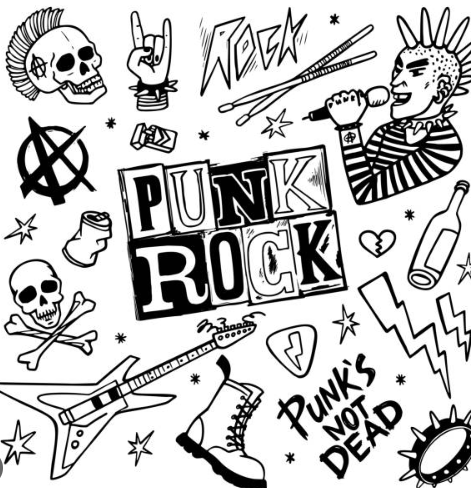A BRIEF HISTORY OF PUNK ROCK

Punk rock emerged in the mid-1970s as a reaction against the excesses of mainstream rock music and the music industry. It began in cities like New York and London, where bands like the Ramones and the Sex Pistols were pivotal.
1970s: The genre is characterized by its fast tempos, simple structures, and rebellious attitude. Early punk bands embraced a DIY ethic, often self-releasing music and promoting their own shows. The punk scene was also intertwined with other art forms, notably visual art and fashion, with iconic figures like Andy Warhol influencing its aesthetic.
1980s: Punk splintered into various subgenres, including hardcore punk (like Black Flag and Minor Threat) and pop punk (such as The Offspring and Green Day). The hardcore scene was marked by even faster music and a more aggressive attitude, while pop punk found mainstream success by blending catchy melodies with punk's raw energy.
1990s: Punk continued to evolve, with bands like Green Day and Rancid bringing it into the mainstream. The rise of the Internet helped underground scenes flourish, allowing new bands to connect with audiences worldwide.
2000s and beyond: Punk rock has continued to influence various genres, including emo and post-punk revival. While its mainstream visibility has fluctuated, the punk ethos—of rebellion, authenticity, and social commentary—remains a powerful cultural force.